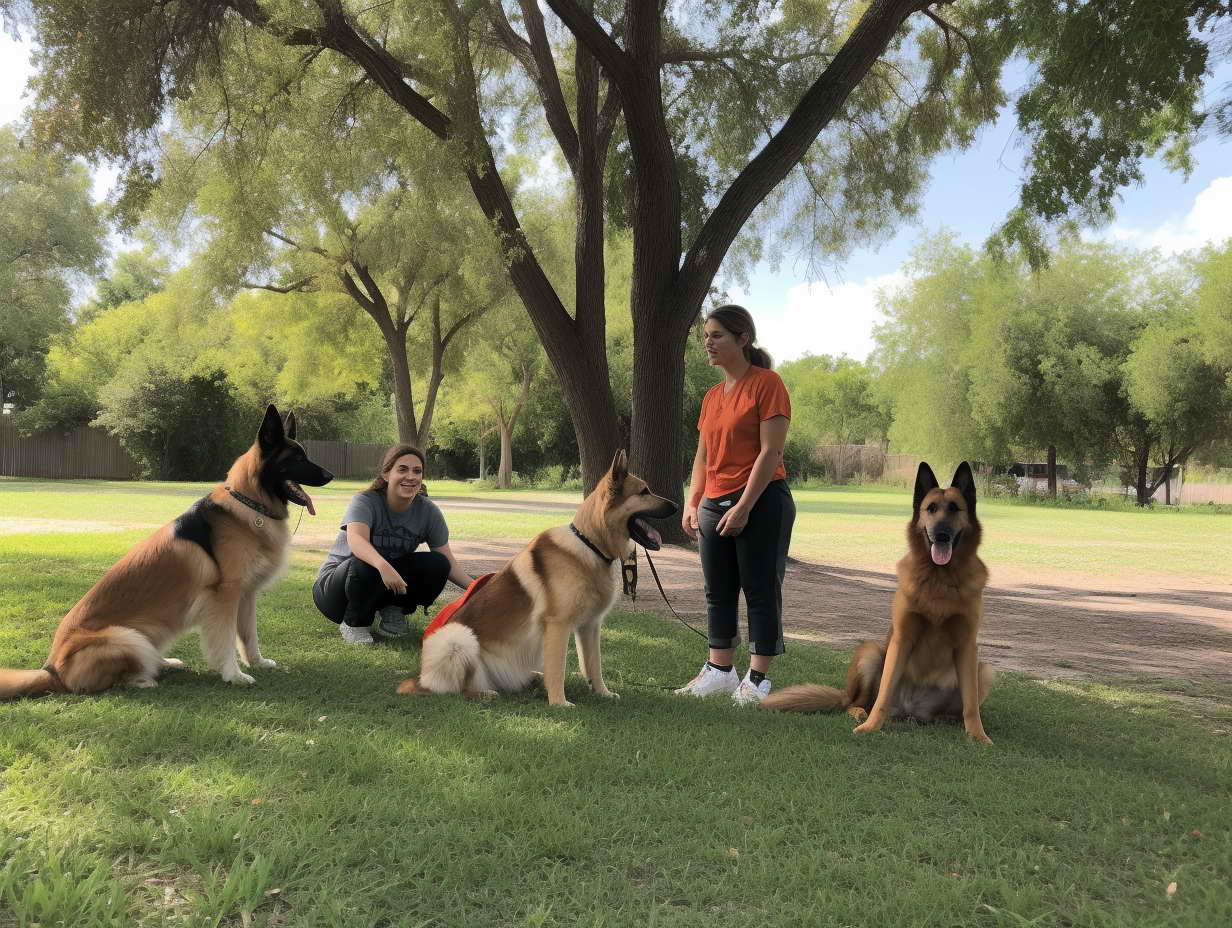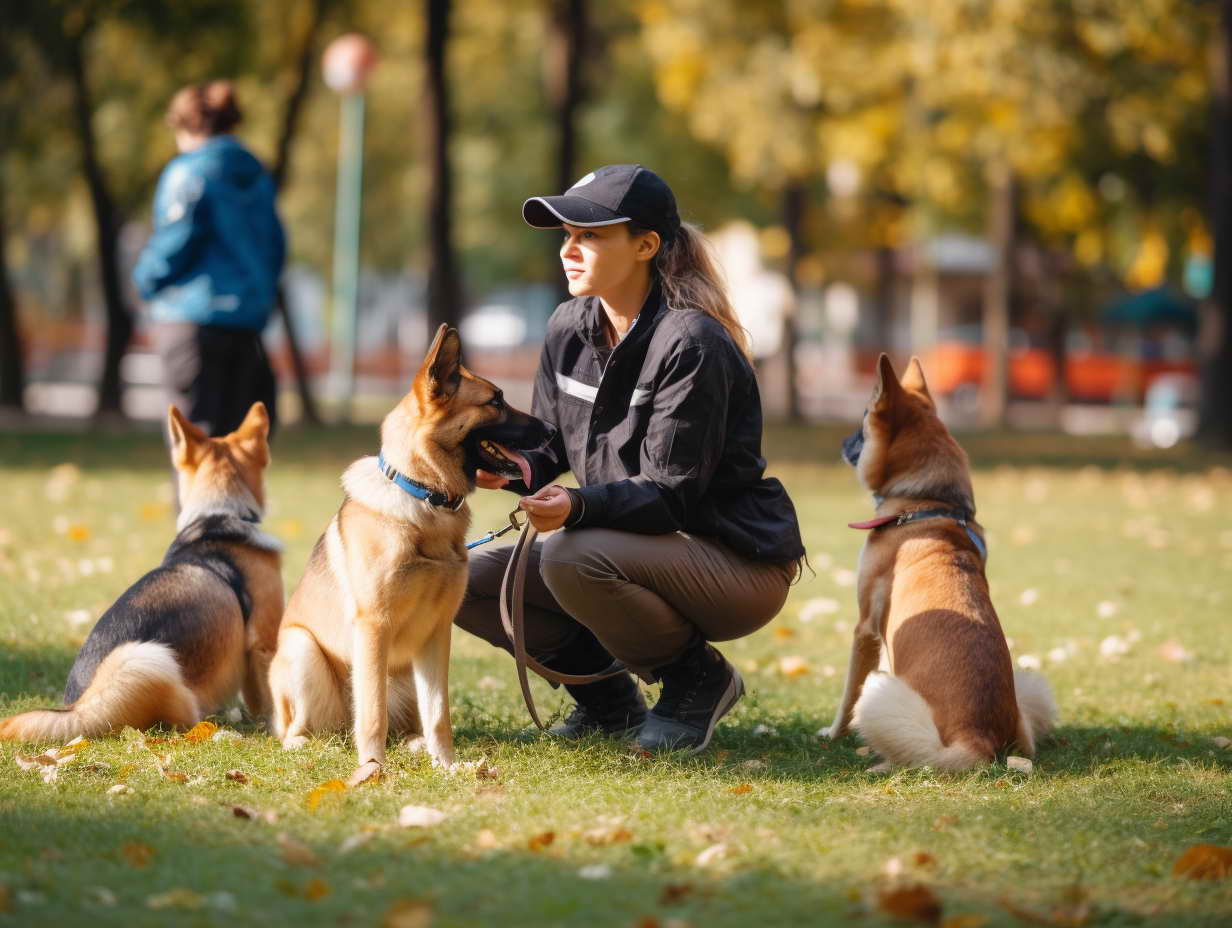Service Dog Training Yourself: A Comprehensive Guide
Service dogs are incredible companions that provide essential support to individuals with disabilities. These loyal and highly trained animals assist people with various tasks, from guiding the visually impaired to alerting those with medical conditions. While many service dogs are professionally trained, some individuals prefer to undertake the rewarding journey of Service Dog Training themselves.
In this guide, we’ll delve into the intricacies of training a service dog independently. From understanding the importance of service dogs to detailed training methods and frequently asked questions, we’ve got you covered.
The Role of Service Dogs: Enhancing Lives through Specialized Support
Service dogs are more than just faithful companions; they are lifelines for individuals with disabilities, providing indispensable assistance and support in various aspects of their daily lives. Their specialized training equips them with the ability to perform a wide range of tasks that help their handlers live more independently and confidently. Let’s delve deeper into the remarkable roles that service dogs play:
1. Providing Mobility Assistance
For individuals with physical disabilities or limited mobility, service dogs are invaluable assets. These dogs are trained to assist their handlers with tasks that require physical strength and dexterity. Some of these tasks include:
- Opening Doors: Service dogs can be trained to open doors by tugging on a rope or pressing a button, allowing their handlers to enter or exit a room or building independently.
- Picking up Dropped Items: When something falls to the ground, service dogs can retrieve it and return it to their handlers, reducing the need for assistance from others.
- Pulling Wheelchairs: In cases where individuals use wheelchairs, service dogs can be taught to pull or push the wheelchair, providing greater mobility and autonomy.
2. Alerting to Medical Conditions
Service dogs with training in medical alert tasks are capable of detecting changes in their handler’s health and promptly alerting them to take necessary action. This ability is particularly crucial for individuals with conditions such as diabetes, epilepsy, or severe allergies. Some examples of medical alerts include:
- Low Blood Sugar Alert: For individuals with diabetes, service dogs can detect a drop in blood sugar levels by scent and alert their handlers, allowing them to take appropriate measures like consuming glucose.
- Seizure Alert: Certain service dogs are trained to sense impending seizures, giving their handlers time to find a safe environment or seek help.
- Allergen Detection: Allergy-alert dogs can detect allergens such as peanuts or pollen, helping their handlers avoid potentially life-threatening allergic reactions.
3. Offering Emotional Support
The emotional bond between a service dog and its handler is profound. Service dogs are known for their ability to provide emotional support and comfort to individuals dealing with mental health challenges. They offer:
- Stress Reduction: The mere presence of a service dog can reduce stress and anxiety levels, helping individuals manage their emotional well-being more effectively.
- Crisis Intervention: Service dogs are trained to recognize signs of distress in their handlers and can provide grounding and soothing during moments of crisis.
- Social Engagement: Service dogs encourage social interaction and connection, which can be particularly beneficial for individuals with conditions like autism or social anxiety.
4. Guiding the Visually Impaired
Guide dogs are among the most recognized types of service dogs. They serve as indispensable aids to individuals with visual impairments, offering them the freedom to navigate the world with confidence. Key responsibilities of guide dogs include:
- Safe Navigation: Guide dogs are trained to lead their handlers safely around obstacles, curbs, and other hazards, making it possible for them to walk independently.
- Locating Objects: These dogs can locate specific objects or landmarks, such as bus stops or elevator buttons, based on their handler’s commands.
- Obeying Traffic Commands: Guide dogs are skilled at obeying traffic commands, ensuring their handlers can cross streets safely.
5. Performing Tasks for Those With Limited Dexterity
Individuals with limited dexterity due to conditions like arthritis, spinal cord injuries, or limb amputations benefit greatly from service dogs trained to perform tasks that require fine motor skills. These tasks may include:
- Turning On Lights: Service dogs can be taught to use their noses or paws to turn light switches on and off, providing illumination when needed.
- Assisting with Dressing: Some service dogs can help their handlers by pulling clothing on or off, buttoning shirts, or even untying shoelaces.
- Carrying Objects: Service dogs can carry bags, purses, or other items, reducing the physical strain on their handlers.

Getting Started with Service Dog Training: Building the Foundation for Success
Embarking on the journey of Service Dog Training Yourself requires careful planning and a strong foundation. Here, we’ll explore the essential steps to get started with training your service dog, ensuring that you lay the groundwork for a successful and meaningful partnership.
1. Selecting the Right Candidate
Not all dogs are suitable for service dog training, and choosing the right candidate is a critical first step. Here’s what you should consider when selecting your prospective service dog:
- Temperament: Look for a dog with a calm and even temperament. Service dogs need to remain composed in various situations and environments.
- Intelligence: Intelligence is essential for learning complex tasks. Dogs that catch on quickly and are eager to please are often excellent candidates.
- Adaptability: A service dog should be adaptable to various environments and situations. They should be comfortable in both quiet and busy settings.
- Health: Ensure your candidate is in good physical health, as they’ll be required to perform various physical tasks.
- Age: While puppies can be trained, older dogs might be more suitable for specific tasks. Consider your dog’s age when planning the training timeline.
2. Basic Obedience Training
Before diving into specialized service dog training, it’s crucial to establish a solid foundation in basic obedience. These fundamental commands are the building blocks for more advanced training:
- Sit: Teach your dog to sit on command, which is a fundamental obedience cue.
- Stay: This command is vital for keeping your dog in place, ensuring they remain steady when needed.
- Heel: Heeling means walking calmly and closely beside you without pulling on the leash.
- Come: Training your dog to come when called is essential for their safety and your control.
- Leave It: This command prevents your dog from picking up or engaging with potentially harmful items.
- Down: Teaching your dog to lie down on command is useful in various situations.
3. Specialized Service Dog Training
Once your dog has mastered basic obedience, you can proceed to specialized service dog training tailored to your specific needs or disability. Here are some common areas of specialization:
- Task Training: Identify the tasks your service dog needs to perform to assist you. This may include retrieving medication, opening doors, or responding to specific medical alerts.
- Public Etiquette: Service dogs must behave impeccably in public. Training should cover manners such as staying calm around distractions, remaining quiet when necessary, and ignoring other people and animals.
- Leash Skills: Proper leash skills are essential. Your dog should walk beside you, respond to leash cues, and avoid pulling.
- Environmental Exposure: Socialize your dog in various environments to ensure they are comfortable and well-behaved in different settings.
4. Socialization
Proper socialization is a crucial aspect of service dog training. Expose your dog to a wide range of experiences, people, animals, and environments. This exposure helps your dog remain confident and well-adjusted in all situations.
- People: Introduce your dog to people of all ages, backgrounds, and appearances. Ensure they are comfortable interacting with strangers.
- Other Dogs: Socializing with other dogs is essential. Your dog should be able to remain calm and focused even in the presence of other animals.
- Public Places: Take your dog to various public places such as stores, restaurants, and parks. This exposure is vital for acclimating your dog to different environments.
- Noises and Distractions: Expose your dog to various noises, such as traffic, sirens, and loud crowds. Gradually increase the level of distractions during training sessions.
Training a service dog yourself is a challenging but incredibly rewarding endeavor. It allows you to develop a deep bond with your canine companion while gaining independence and support tailored to your needs. Remember that patience, consistency, and proper training techniques are key to success.

Leave a Reply